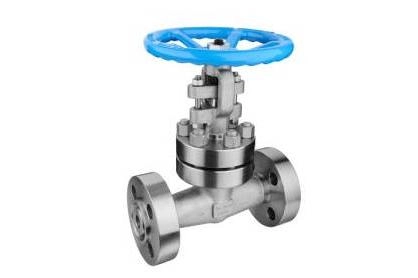How to Pick Between Ball Valves and Gate Valves for Your Needs

Getting to Know Ball Valves vs Gate Valves
What’s a Ball Valve?
A ball valve works through a quarter-turn mechanism. It uses a spherical component to control liquid movement. This rotating part is called a “ball”. The ball features a central passage. Turning the handle spins this sphere. This action starts or stops fluid flow. The design achieves quick closure. It ensures leak-proof performance. These valves deliver dependable operation. They last through extended use. Their design works well in numerous situations.
What’s a Gate Valve?
By contrast, a gate valve is a linear-motion tool that uses a flat or wedge-shaped gate to control fluid flow. This gate slides up or down, perpendicular to the flow path. Unlike ball valves, gate valves are mainly for on/off tasks. They’re not built for flow adjustment. They work great in systems needing rare operation and low pressure loss.
Key Differences in Design and Function
The biggest difference between ball valves and gate valves lies in their build and operation. Ball valves use a spinning round part for quick action. Gate valves rely on a sliding gate, which takes more time to work. Also, ball valves seal better due to their tight shut-off. Gate valves are ideal for jobs needing minimal pressure loss over time.
Comparing Performance Features: Ball Valve vs Gate Valve
Flow Control Abilities
Ball valves excel in tasks requiring precise fluid flow control. Their quarter-turn design allows fast adjustments. They’re great for systems needing frequent on/off switches. Gate valves do better where steady flow with little resistance is key.
Pressure Handling and Sealing
Ball valves perform well in high-pressure setups and seal tightly. They minimize leak risks by fully stopping fluid flow. Gate valves handle high pressures too. But their sealing may fade over time due to gate or seat wear.
Durability and Maintenance
Both valve types are tough. Still, ball valves often need less care due to their simple structure and fewer parts. Gate valves may demand more upkeep. Their components, like the stem and seat, can wear out with long-term use.
Application Scenarios for Each Valve Type
When to Use a Ball Valve
Common Industries and Uses
Ball valves are popular in fields like oil and gas, chemical processing, water treatment, and pharmaceuticals. Their compact size and simple operation make them perfect for tight spaces needing quick shut-off.
Advantages in Specific Cases
For high-pressure systems or corrosive fluids, ball valves work reliably. Materials like stainless steel or brass ensure long life. They’re excellent for emergencies requiring instant flow cutoff.
When to Use a Gate Valve
Common Industries and Uses
Gate valves are common in power generation, water distribution, mining, and marine systems. They manage large fluid volumes with minimal pressure drop, making them vital in these areas.
Advantages in Specific Cases
Gate valves are great for applications where valves stay open for long periods with rare use. Their design promotes smooth flow, reducing energy costs in pumping systems.
Factors to Consider When Choosing Between Ball Valve and Gate Valve
Operational Needs and Conditions
Pressure and Temperature Factors
Picking between a ball valve and a gate valve requires understanding pressure and temperature conditions. Ball valves are often selected for high-pressure systems. Their robust design and tight sealing prevent leaks, even in tough conditions. Gate valves can handle high pressures too. But their sealing may weaken over time due to gate or seat wear.
Temperature matters too. Ball valves perform well across a wide temperature range. They work in both freezing and scorching applications. Gate valves handle high temperatures but may lose strength under prolonged extreme heat.
Operation Frequency
How often a valve is used is important. Ball valves are ideal for frequent operation. Their quarter-turn design enables quick opening and closing. This fits systems needing rapid flow control or isolation. Gate valves, with their slower linear motion, are better for rare use. They take longer to fully open or close.
Material Compatibility with Media
The valve material must suit the fluid it handles to ensure longevity and performance. Ball valves come in materials like stainless steel, brass, and PVC. These resist corrosive fluids well, making them perfect for chemical or harsh substance industries.
Gate valves also offer various material options. But they need careful selection based on the fluid’s nature. Abrasive or slurry-like fluids can wear gate valves faster than ball valves.
Installation Space and Cost
Available space often affects valve choice. Ball valves are small and need less room. They’re great for tight setups. Gate valves are bigger and heavier due to their linear design. They may not suit confined spaces.
Cost is another consideration. Ball valves often have a higher upfront price due to complex manufacturing and quality materials. But they save money over time with lower maintenance needs. Gate valves may cost less initially. Yet, they could have higher upkeep costs.
Pros and Cons of Ball Valves vs. Gate Valves
Advantages and Disadvantages of Ball Valves
Ball valves offer several perks:
- Quick Operation: Their quarter-turn design enables fast opening and closing.
• Tight Sealing: The round disc ensures a strong shut-off.
• Longevity: Fewer moving parts mean less maintenance.
• Flexibility: They work well in high-pressure systems and corrosive settings.
But there are downsides:
• Price: They require a higher initial investment than gate valves.
• Throttling Issues: Partial opening can cause turbulence and wear, making them less ideal for flow regulation.
Advantages and Disadvantages of Gate Valves
Gate valves provide unique benefits:
• Minimal Pressure Drop: When fully open, they allow smooth flow.
• Large System Fit: They handle big fluid volumes efficiently.
• Lower Initial Cost: They’re generally cheaper than ball valves upfront.
Their drawbacks include:
• Slower Operation: Linear motion takes longer to open or close.
• Maintenance Needs: Parts like the stem and seat wear out more.
• Space Requirements: Their larger size suits bigger installations.
Innovations and Trends in Valve Technology
.webp)
Advances in Ball Valve Design
Recent ball valve improvements focus on enhancing performance and reliability. New materials, like duplex stainless steel, boost corrosion resistance while staying strong under high pressure. Automation is also growing. Many ball valves now feature actuators for remote operation, increasing efficiency in industrial settings.
Multi-port ball valves are another step forward. They handle complex flow patterns without needing multiple valves. This saves space and simplifies systems.
Developments in Gate Valve Technology
Gate valve advancements tackle traditional flaws. Improved sealing, like resilient seated gates, reduces leaks even after extended use. Manufacturers are also using lightweight materials like composites. These reduce valve weight without losing strength.
Smart gate valves with sensors are becoming popular. They track flow rate, pressure, and temperature in real time. These systems enable predictive maintenance, alerting operators to issues before they become expensive.
For professionals seeking cutting-edge solutions for diverse industrial needs, Miwival provides a broad range of high-quality valve products. These are built for reliability and peak performance across many applications. Check out Miwival’s catalog today to find the ideal solution for your operational needs!
FAQ
Q: Which valve type, ball valve or gate valve, operates faster?
A: Ball Valve: Typically works faster. It opens or closes fully with a 90-degree turn of the handle.
Speed: Usually takes less than 1 second to open or close.
Gate Valve: Takes longer to operate. It requires several turns of the handle to fully open or close.
Speed: Needs 3 to 8 turns for full operation.
Q: Which valve, ball valve or gate valve, is better for regulating flow?
A: Ball Valve: Great for on/off control but not for regulating flow. It offers minimal control in partially open positions.
Gate Valve: Built for fully open or fully closed positions. It can be used for throttling flow, but it’s not as precise as other valve types.





